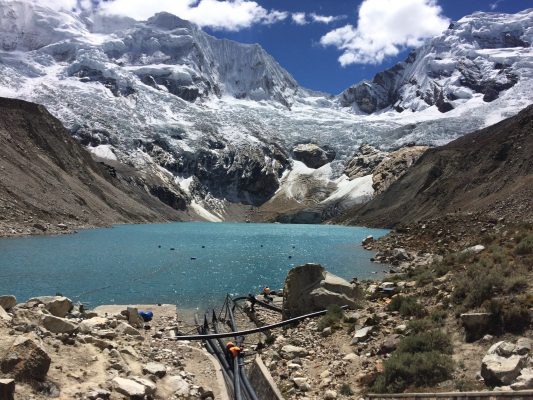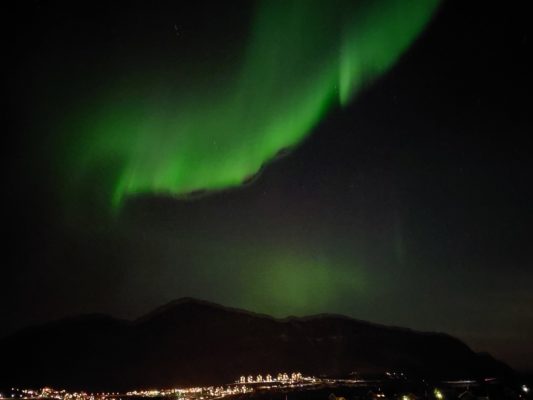I have just returned from nearly three months in Nuuk, the capital of Greenland, where I was doing my PhD placement at Asiaq Greenland Survey. Read on to find out what science I got up to… everything from mapping mountain glacier snowline change to avalanches! How do you map glacier snowline evolution? During my PhD research placement, I was working at Asiaq Greenland Survey in their Hydrolo ...[Read More]
Image of the Week – Yes, you’re looking at one of Peru’s most dangerous glacial lakes!

Lake Palcacocha is one of Peru’s most dangerous glacial lakes due to the threat of an avalanche entering the lake and causing a glacial lake outburst flood. The siphons installed in 2011 lowered the level of the lake by 3-5 m in an attempt to reduce the flood hazard of the lake. [Credit: David Rounce]
As mountain glaciers melt and recede, they often leave behind large glacial lake that are contained by the glaciers’ old terminal moraines. These glacial lakes are found throughout the world and can pose a significant flood hazard to downstream communities and infrastructure. The image of this week focuses on Lake Palcacocha, a large glacial lake located in Peru’s Cordillera Blanca at an elevation ...[Read More]

